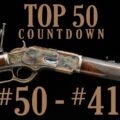1938 Chinese K98k
After tens of thousands rifles orders having been put on FN and ZB, China came to Mauser Company in late 1937 and expected to buy 100000 rifles. The very first K98k contract Chinese was awarded to Mauser in February 1938. The contract for 50000 rifles was allegedly conducted by Tan Boyu (商務專員處專員譚伯羽), the Representative of Chinese Commercial Office in Berlin, who was under the instruction of Central Military Committee.
Two months later, the representative approached to Mauser Company again intending to buy another batch of 50000 rifles. The deteriorating situation of diplomacy between Germany and China, however, diminished the possibility of further supplying firearms to China. On May 3, Tan received an unknown delegate from Mauser Company, who informed Tan two ominous news. First, Mauser would delay the delivery of 5000 rifles scheduled in May due of the embargo. Second, Mauser Company unlikely to take the offer of another 50000 rifle. Considering the circumstance, Tan canceled the intention of the second contract on July 1. Nevertheless, this is not the end of Chinese K98k contract story.
In 1938, China bought 50000 K98k from Mauser Company at a price of 5.5 Sterling pounds apiece amounting the whole contract to 262500 Sterling Pounds.
Delivery of 1938 Chinese contract K98k
HAPRO was not involved into many Chinese small arms deals, which program mostly handled heavy weapons, such as artillery, torpedo boat and ammunition. Another Germany similar agency , Handelsgesellschaft fuer Import und Export, Berman. (IMEX) took care of the transportation of Chinese rifles.
As the end of May 1938, the company had shipped 30000 Chinese K98k China. In June NAZI government banned Germany companies from selling and shipping weapons to China. Therefore, Mauser diverted the rest shipments to a Finnish company called Messrs. DAHLBERG and HILBERT, Q.Y Helsinki whose agency in Hamburg exactly being IMEX. Outwardly, Mauser claimed the weapons are of Finnish Government orders.
On July 5, Chinese confirmed first 30000 rifles were accepted. Three days later, on July 8, Tan reported Finnish ship Hansrickmers had left Hamburg with 5000 rifles which are ones should be delivered by the end of May. On July 11, Sheng Pingchen reported the last 15000 rifles would be shipped on Aug 1. The Weekly Report of Weapons Importation compiled by Central Military Committee shows that all 1938 Chinese K98k were delivered and in China intact.
1939 Chinese K98k
A setback of Germany-Japan relationship occurring during late 1938 to early 1939 gave China an opportunity to purchase the second K98k contract. Japan’s refusal of concession Most Favored Nation status in North China to Germany dissolved the negotiating Economy cooperation protocol between NAZI government and Japan. . China sized this last chance ordering the second contract of 50000 rifles from Mauser Company.
In November 1938, Nationalist Government still wanted to procure 100,000 rifles. China Central Bank was deputed to conduct the transaction. Back to June 1938, under the restriction put by NAZI, Siemssen & Co had already advised Nationalists Government that China could purchase weapons through an agency. China Central Bank’s representative in Hongkong enquired at least four manufacures and agencies including Boixo Frères, FN, ZB and Siemssen & Co to submit own offer.
Boixo Frères offered “off the shelf” Model 24 for CIF 4 pounds 18 schillings each. China could make the payment with raw materials.
FN offered Model 24 for CIF 4 pounds 16 schillings each. China could pay the factory with tin ore. FN would deliver 8000 rifles each month starting on January 1939 and conclude the deal within 12 months.
ZB offered Model 24 for FOB 4 pounds 19 schillings. The factory had 70,000 rifles in stock that can be delivered immediately, the rest 30,000 would be delivered by December.
Siemssen & Co. offered “Model 1937” rifle directly from German military force at a price of CIF 5 pounds (shipped to Yangon, Burma) apiece. The payment would be handled by HAPRO.
Tan Boyu also informed Chinese Minister of Finance H.H Kung that the unit price of Mauser Company rifle with 1000 cartridges was 7 pounds 4 schillings.
On January 11 1939, Chinese Central Bank representative in Hongkong received instruction from H.H Kung that ZB and Siamese & Co were excluded in the deal because of their uncompetitive price.
Probably aiming to secure the deal, several days later, FN initially lowered its price then followed by Siamese & Co lowering price to 4 pounds 4 schillings apiece if China would buy 50000 rifles. Siamese & Co agreed to make full delivery within five months by delivering 10000 rifles each month. Suddenly Siamese & Co had the lead in this bid. On January 19, Minister of Finance permitted Chinese delegate in Hongkong to sing the agreement with Siemssen & Co.
As previously agreed in the offer, the down payment was funded by reallocating 300,000 US dollars from Chinese airplane manufacturing program, an agreement China paid but not realized. HAPRO Company would take care of the rest payments.
Though the contract was in covert, but there still were obstacles ahead. Siamese & Co informed Tan Boyu that Chinese inspectors were probated from inspecting the rifles at scene according to an order from NAZI government. Finally, Tan managed to acquire permission to let Chinese officials to inspect rifles covertly. And the delivery times eventually arranged on March and April regarding the urgency of Chinese government.
On March 23, Chinese embassy in Berlin issued a passport to the contract of 50000 “Original Mauser Infantry Rifle Model 1937 Cal.7.9.” In British custom records, 49960 rifles arrived in Yangon between May and July. It takes 4 to 8 weeks from Hamburg to designated port.

Enthusiast of the History of Chinese Mauser rifle
Check my research:https://mausercn.blogspot.com/
Feel free to contact me: zou.jiahong@yahoo.com/zou.aaron@outlook.com





